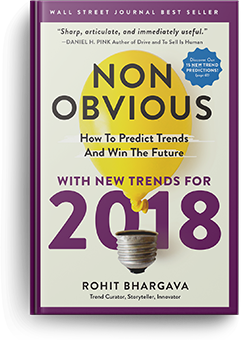Backstorytelling
Organizations are using the power of stories to share and transmit relatable missions and values that generate and solidify customer loyalty.

About This Trend:
Founded in 1917, Grey Advertising was one of the earliest advertising agencies, and the only agency not named after its founders, who instead opted for Grey due to their Jewish heritage. So in the first quarter of 2017, the agency decided to rename itself after the true founders, Valenstein & Fatt, for 100 days, and even gave its branding a complete makeover.
They changed all the signage, the letterhead, and the website, and even trained the receptionist to answer the phone with the new agency name. The result of the effort was plenty of media attention and, more importantly, a powerful story to share with potential new recruits. This backstory offered a new reason to believe in the brand that went beyond their employees, portfolio, and reputation. Grey used the power of Backstorytelling to present their history as a reason to believe in the agency and its corporate culture.
In the beauty industry, similar backstories are told through the personal lenses of engaging micro-influencers who build loyal audiences through sharing personal content and videos that, simply put, mean they can make anyone feel like their best friend. In fact, Huda Kattan is fond of describing herself as “everyone’s beauty BFF.” Of course, she has 20 million followers on Instagram, has been named one of the Internet’s most influential people by TIME magazine, and owns a rapidly expanding beauty empire selling fake lashes and other makeup products under the brand Huda Beauty. Through Backstorytelling, Kattan was able to build a business empire out of the power of her personality.

Trend Longevity Rating
Relevant For:
Originally Published In:









